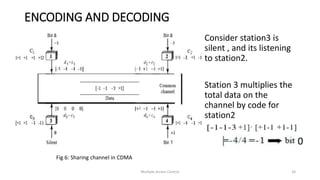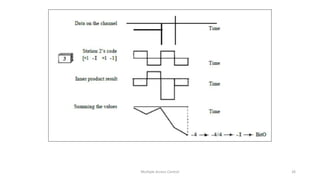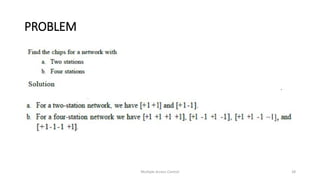The document provides an overview of multiple access protocols in computer networks, discussing various methods such as random access, controlled access, and channelization protocols. It details specific techniques like Frequency Division Multiple Access (FDMA), Time Division Multiple Access (TDMA), and Code Division Multiple Access (CDMA), explaining their operational mechanics and use cases. The document emphasizes the importance of managing simultaneous data transmission to prevent collisions and ensure effective communication among multiple stations.
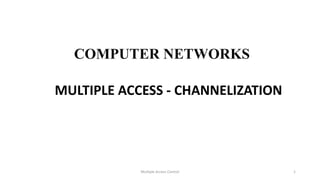

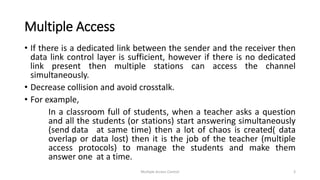
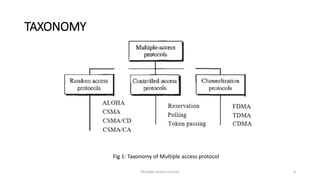
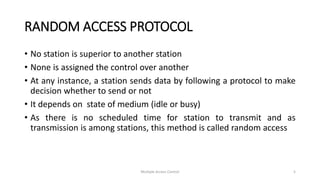

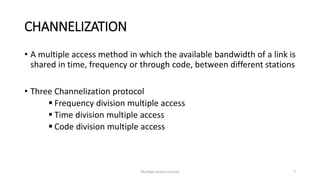
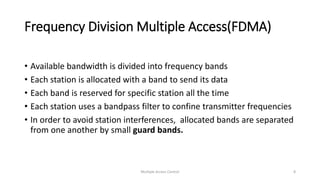
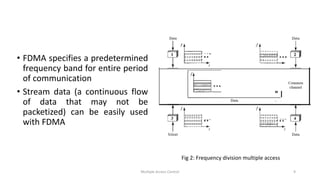
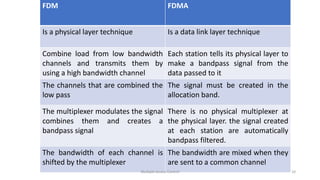

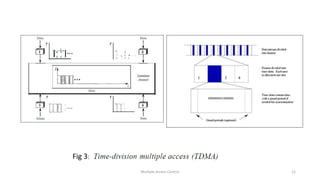
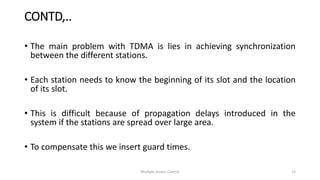
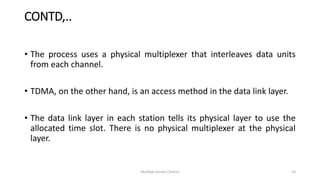
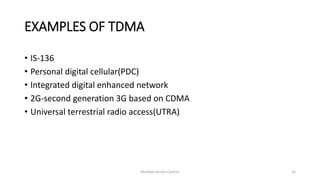
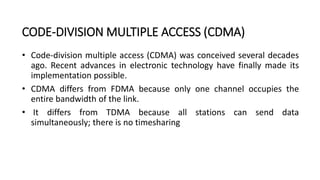

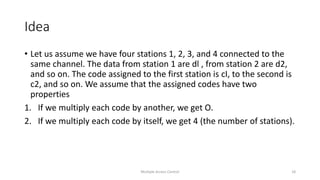

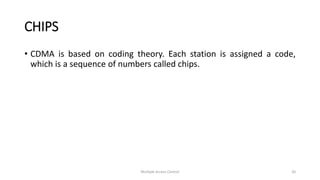
![Chip sequences
• I [+1 +1 +1 +11 I 1[+1 -1 +1 -I) I I [+1 + -I - 11 I I [+ -1 -1 +IJ I
• Each sequence is made of N elements, where N is the number of
stations.
• If we multiply a sequence by a number, every element in the
sequence is multiplied by that element. This is called multiplication of
a sequence by a scalar. For example,
[+1 +1-1-1]=[+2+2-2-2]
• If we multiply two equal sequences, element by element, and add the
results, we get N, where N is the number of elements in the each
sequence. This is called the inner product of two equal sequences.
For example,
[+1 +1-1 -n· [+1 +1 -1 -1] = 1 + 1 + 1 + 1 = 4
Multiple Access Control 21](https://image.slidesharecdn.com/computernetworks-200102061919/85/Computer-networks-Channelization-21-320.jpg)
![• If we multiply two different sequences, element by element, and add
the results, we get O. This is called inner product of two different
sequences. For example,
[+1 +1 -1 -1] • [+1 +1 +1 +1] = 1 + 1- 1- 1= 0
• Adding two sequences means adding the corresponding elements.
The result is another sequence. For example,
[+1+1-1-1]+[+1+1+1+1]=[+2+2 00]
Multiple Access Control 22](https://image.slidesharecdn.com/computernetworks-200102061919/85/Computer-networks-Channelization-22-320.jpg)

